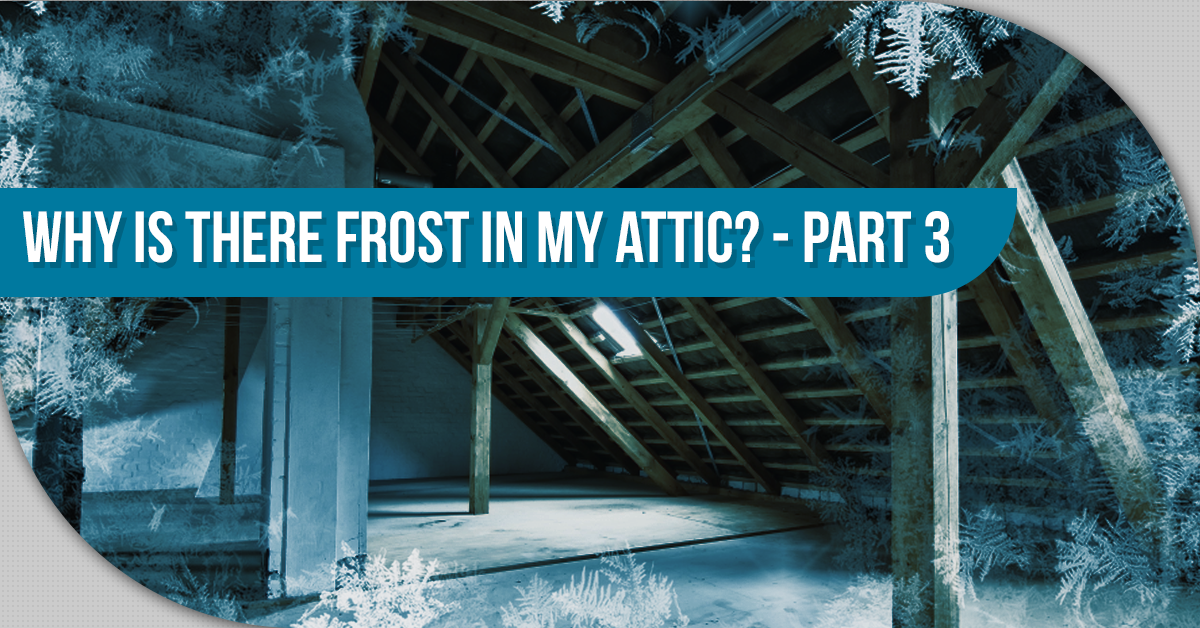Why Is There Frost In My Attic? – Part 3
- Home
- Why Is There Frost In My Attic? – Part 3
Why Is There Frost In My Attic? – Part 3
 Hello, and welcome back to our blog here at Safe Investment Home Inspections. This is part three of our series about attic frost, so if you haven’t already, you can read part one here. Believe it or not, attic frost is a relatively common issue, and although there are many people who think that it can be prevented with more insulation, there are actually several major factors that can cause or make the issue worse. Attic frost will eventually melt, leading to structural damage and mold formation that could be a health hazard for you and your family. Keep reading to learn more about this issue and contact Safe Investment Home Inspections today for a full-home inspection in Denver.
Hello, and welcome back to our blog here at Safe Investment Home Inspections. This is part three of our series about attic frost, so if you haven’t already, you can read part one here. Believe it or not, attic frost is a relatively common issue, and although there are many people who think that it can be prevented with more insulation, there are actually several major factors that can cause or make the issue worse. Attic frost will eventually melt, leading to structural damage and mold formation that could be a health hazard for you and your family. Keep reading to learn more about this issue and contact Safe Investment Home Inspections today for a full-home inspection in Denver.
Lowering humidity
Another way to prevent frost in the attic is to reduce humidity in your home. Typically, homes that have issues with a lot of frost in the attic are caused by humidifiers running 24/7. If you need a specific area of your home to be humidified, use a desktop humidifier that won’t have an enormous impact on your home. Large whole-home humidifiers can damage your home and lead to costly repairs.
You can also reduce your humidity by ensuring that you leave exhaust fans on in your bathroom for at least an hour after showering and while cooking in your kitchen. You can also install heat recovery ventilation (HRV) which will replace humid indoor air with dry outdoor air without removing too much heat.
Maintaining air pressure
Not only does humidity increase your chances of accumulating frost in the attic, but if the air pressure in your home is off, it may also increase the likelihood that this will happen. Because warm air rises, homes are designed so that air enters the towards the bottom of the home and exits at the top. If your home has a combustion air duct attached to the return plenum, it will pressurize when the furnace is running. As a result, the effect of an attic air leak will be increased, bringing more hot and humid air into your attic. Instead of being connected back to return plenums, your combustion air ducts should be dropped down into the room.
Poor HVAC ductwork will also cause pressure issues, thus resulting in more humidity in your attic. You should be sure to seal up any holes or gaps in your furnace ductwork. Too many return openings in the basement ductwork will result in unbalanced pressure between the basement and the rest of your home. Test this by opening your basement door slightly and turning on your furnace. If the door closes, the ductwork isn’t balanced and you may be contributing to the issues caused by air leaks in your attic.
Many people think that maintaining their home’s energy efficiency and preventing humidity and frost in the attic comes down to how much insulation is installed. Although having insulation installed is an important part of the process, it certainly isn’t the only. And if you already have a frost problem, adding insulation will actually make the issue worse. Not to mention, the humidity will ruin what insulation you do have installed.
Contact Safe Investment Home Inspections
Are you worried that attic frost may have caused permanent damage to your home and led to the growth of harmful molds? Although there are several steps you can take to remedy this issue on your own, your first step should be to call a certified home inspector at Safe Investment Home Inspections. We will examine the issue and direct to a specialist that will be able to reverse the damage done to your home and make it a safe place for you to live again. Contact us today.



